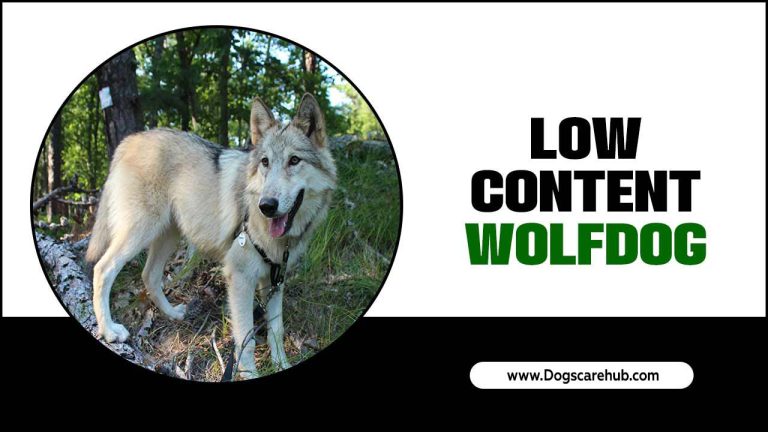
A low-content wolfdog is a hybrid breed that has a lower percentage of wolf ancestry compared to high-content wolfdogs. We have bred these unique canines by crossing domestic dogs with wolves, resulting in a fascinating mix of traits from both species.
Here we will explore the characteristics of low-content wolfdogs, including their appearance and behavior. We will also answer some common questions like whether they need special enclosures or if they can be potty trained. If you’re considering getting a low content wolfdog as a pet, keep reading to learn everything you need to know about living with these fascinating creatures.
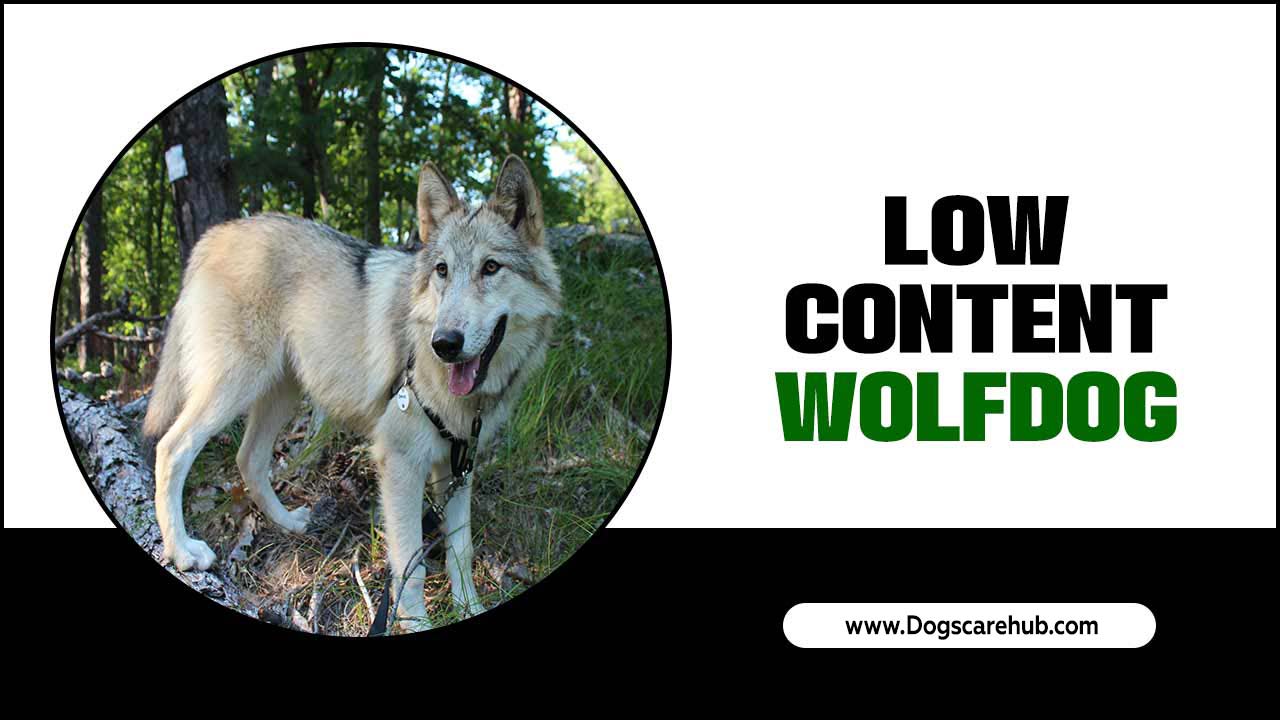
Low Content Wolfdog Characteristics

Low content wolfdogs are a unique and fascinating breed. They are typically a mix of dog breeds and have a small percentage of wolf ancestry. While they may not possess the same physical characteristics as their higher-content counterparts, low-content wolfdogs still display some traits reminiscent of their wild ancestors.
These dogs often have a high prey drive, exceptional agility, and a strong sense of loyalty. Additionally, they are highly intelligent and require plenty of mental stimulation.
It’s important to note that owning a low-content wolfdog comes with specific challenges and responsibilities. Proper socialization, training, and understanding of their needs are crucial for providing them with a happy and fulfilling life.
Appearance
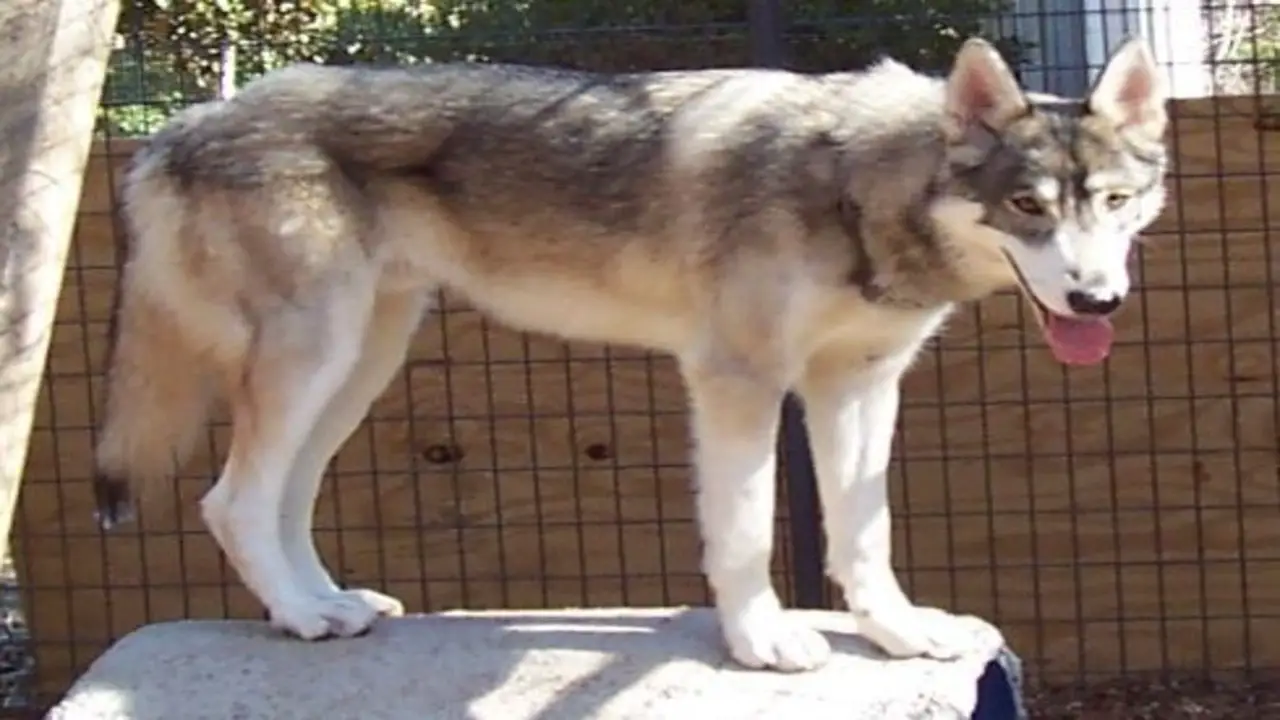
Low-content wolfdogs have a unique and striking appearance that sets them apart from other dog breeds. With their wolf-like features, including a slender build, pointed ears, and a bushy tail, they often resemble their wild ancestors.
However, low-content wolfdogs also have distinct characteristics that differentiate them from purebred wolves. They typically have a mix of wolf and domestic dog traits, resulting in a more varied appearance among individuals.
Some may exhibit more wolf-like features, while others may resemble their dog lineage more closely. Overall, the appearance of low-content wolfdogs is captivating and can be a major draw for those interested in owning one as a pet.
Coat
The coat of a low-content wolfdog can vary depending on the specific breeding and genetics involved. Low-content wolfdogs typically have a coat similar to that of their domestic dog ancestors, with various colors and patterns.
Common coat colors include black, gray, tan, and white, often with a combination of these colors. The coat texture can also vary, with some low-content wolfdogs having a dense double coat while others have a shorter and less dense coat. It’s important to note that the coat of a low-content wolfdog may require regular grooming to keep it clean and healthy.
Snout
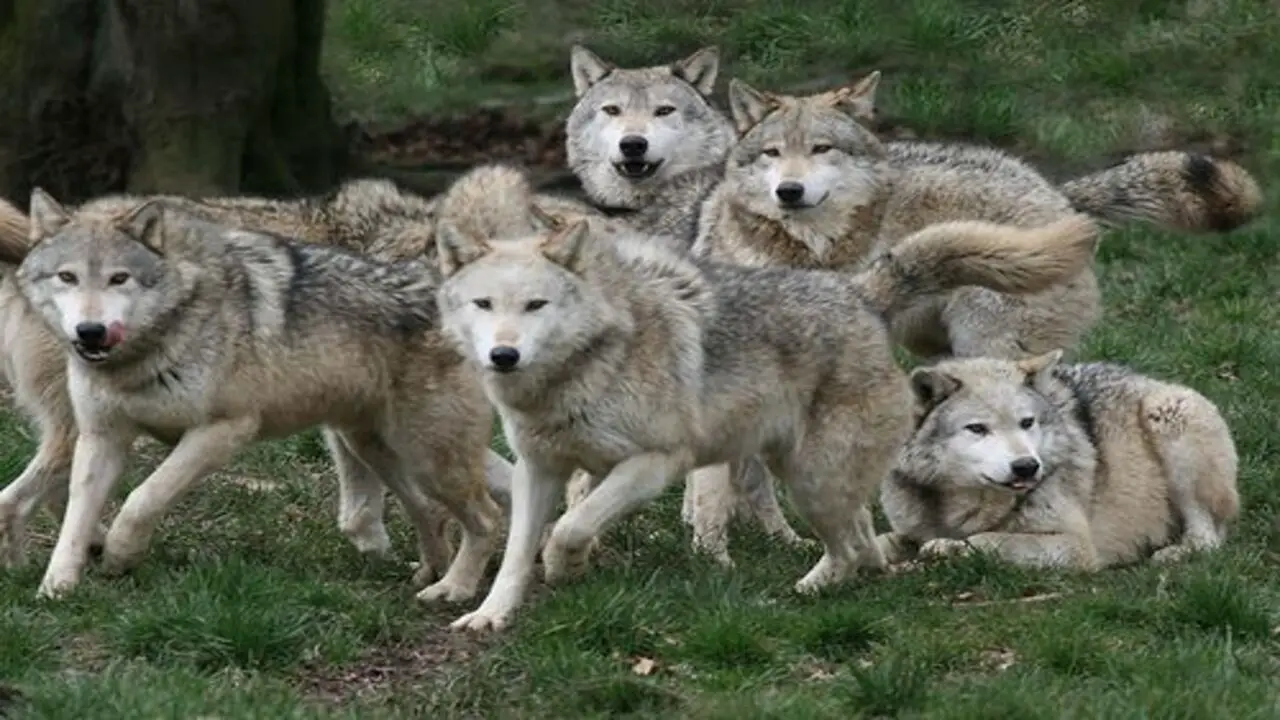
A low-content wolfdog typically refers to a dog with a small percentage of wolf DNA, usually less than 25%. One characteristic often associated with low-content wolfdogs is their snout. Compared to high-content wolfdogs with a higher percentage of wolf DNA and more physical traits resembling wolves, low-content wolfdogs may have a shorter snout and appear more similar to domestic dogs.
It is important to note that the appearance and characteristics of low-content wolfdogs can vary depending on their individual genetic makeup, as they are a mix between wolves and domestic dogs.
Tail
The tail of a low-content wolfdog often resembles that of a wolf, bushy and full. Unlike some dog breeds, their tail type held downward rather than curled upwards.
This unique characteristic adds to their wolf-like appearance, as the low-content wolfdog’s genetics contain evidence of their wolf ancestry. The bushy tail serves various purposes, including communication, balance, and temperature regulation.
It can communicate fear, excitement, or submission to other canines or humans. Additionally, the tail aids in maintaining balance during agile movements or while navigating challenging terrain.
With its downward position, the tail helps regulate body temperature by protecting sensitive areas from extreme weather conditions. Overall, the tail is an essential aspect of a low-content wolfdog’s phenotype, showcasing its genetic link to the gray wolf.
Eyes
A distinguishing feature of low-content wolfdogs is the variety of eye colors they can possess. These can range from amber to brown and sometimes even blue. Interestingly, their eyes often have a piercing gaze reminiscent of their wild wolf ancestors.
This adds to their unique and captivating appearance. The combination of different eye colors and the intense gaze gives them an air of mystery and allure. So, if you’re lucky enough to encounter a low-content wolfdog, be prepared to meet their captivating eyes.
Behavior
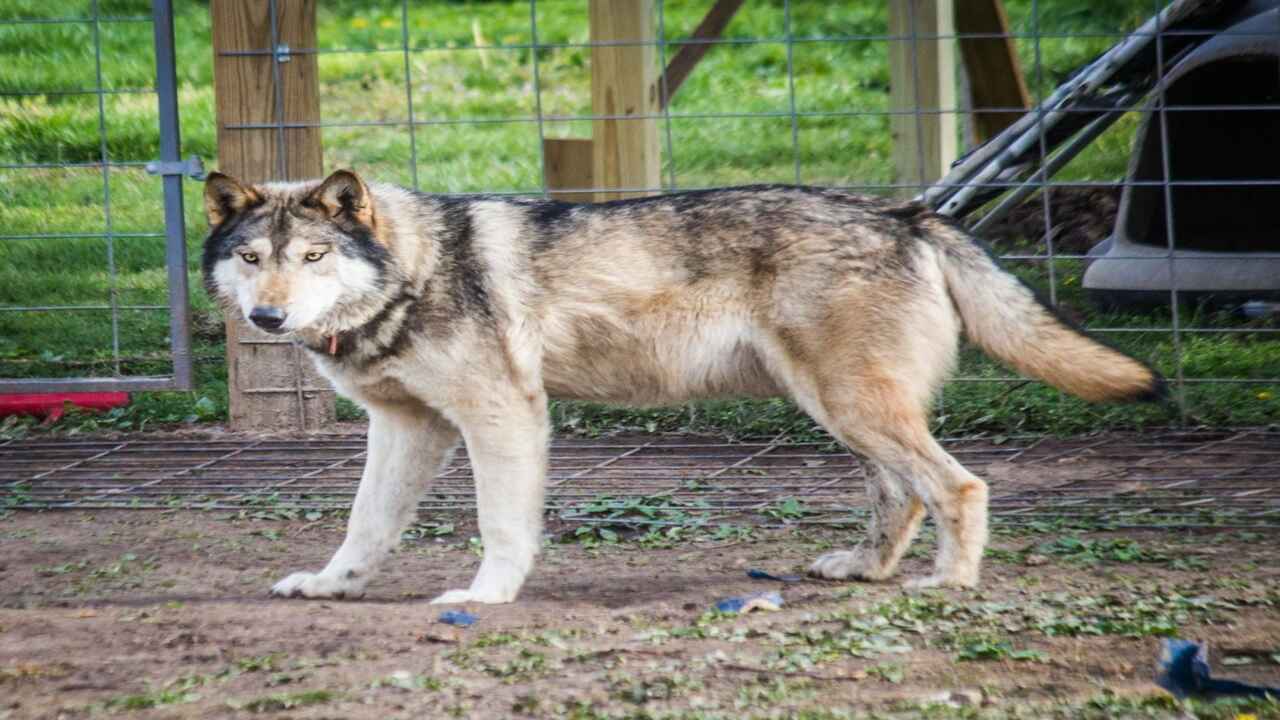
It is important to understand low-content wolfdogs’ behavior and unique characteristics. Low-content wolfdogs have a mix of wolf and dog ancestry, typically ranging from 1% to 49% wolf DNA. As a result, they may exhibit some wolf-like behaviors, such as heightened senses, independent thinking, and a strong prey drive.
However, their dog’s genetics and upbringing can also influence their behavior. Providing proper socialization, training, and enrichment for low-content wolfdogs is essential to help them thrive in domestic environments. Understanding their behavior can help owners create a safe and fulfilling life for these fascinating animals.
Temperament
Regarding the temperament of low-content wolfdogs, it’s important to understand that each individual dog may have different traits and behaviors. Generally, low-content wolfdogs are known for being intelligent, independent, and highly curious animals.
They often display a strong prey drive and may tend to be more aloof or reserved than other breeds. However, with proper socialization and training from an early age, low-content wolfdogs can make loyal and loving companions.
It’s essential for potential owners to do thorough research and consult with experienced breeders or trainers before deciding if a low-content wolfdog is the right fit for them.
Training
Training a low-content wolfdog can be a unique and rewarding experience. Due to their wolf ancestry, these dogs may have some instinctual behaviors that require extra attention and training.
It is important to establish yourself as the pack leader early on and provide consistent, positive reinforcement training. Socialization is also crucial for these dogs, as they can be wary of strangers and unfamiliar situations.
Gradually exposing them to different environments, people, and animals from a young age can help them become more confident and well-adjusted. Additionally, it may be beneficial to seek professional guidance from trainers experienced in working with wolfdogs to ensure you provide the best training for your low-content wolfdog.
Living With A Low-Content Wolf Dog
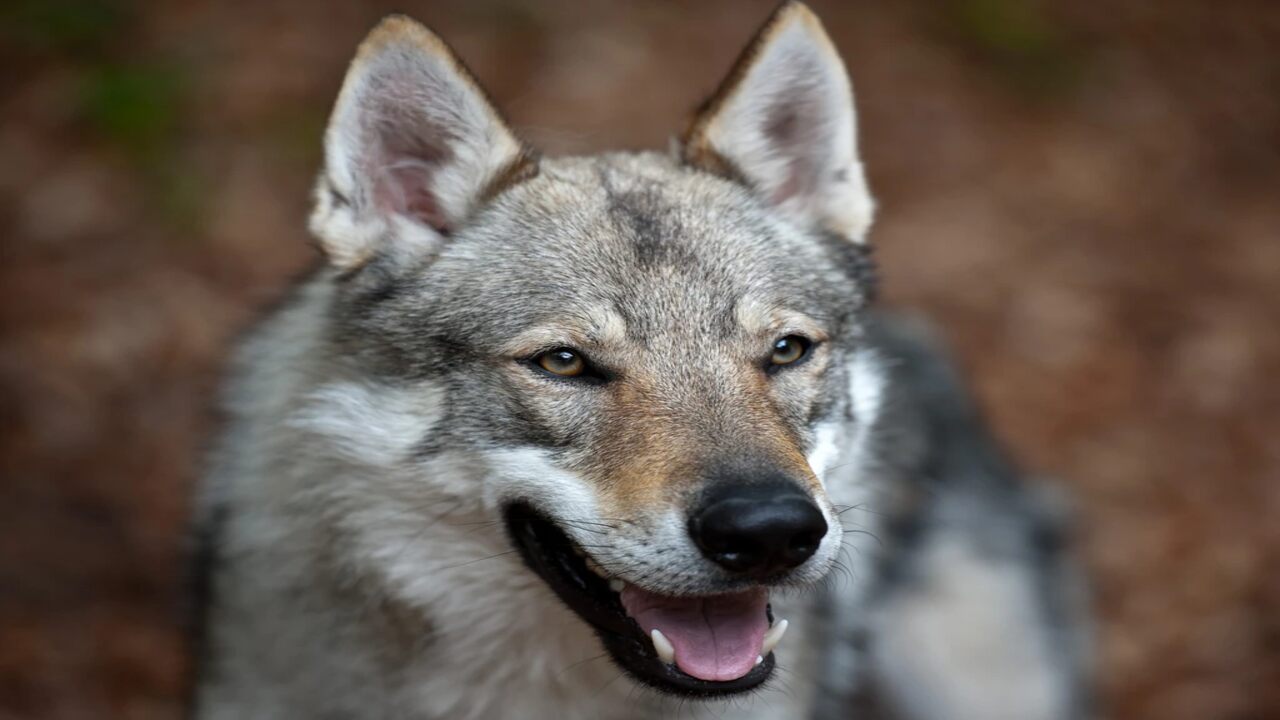
Living with a low-content wolfdog involves understanding their unique needs and behaviors. These animals thrive in homes that provide secure containment and ample space for exercise.
It’s important for owners to be prepared for the additional challenges that come with owning a low-content wolfdog. Proper socialization and training are crucial for creating a harmonious living environment.
Consulting with experts and experienced low-content wolfdog owners is recommended to ensure a successful living arrangement. Their knowledge and insights can provide valuable guidance on caring for these animals best. These dogs have wolf ancestry, so their behavior and needs may differ from traditional canines.
Do Low-Content Wolf Dogs Need A Special Enclosure?
A suitable enclosure for low-content wolf dogs is essential to ensure their safety and well-being. While low-content wolf dogs have a lower percentage of wolf genetics than higher-content individuals, they still retain some wild instincts and characteristics.
Therefore, creating an environment that meets their needs is important. A special enclosure can help prevent escapes and minimize the risk of conflicts with other animals or humans.
It should be spacious, securely fenced, and designed for mental stimulation and physical exercise. Additionally, it is recommended to consult with experts or experienced owners to determine the most appropriate enclosure setup for your low-content wolf dog.
Can Low-Content Wolf Dogs Be Potty Trained?
Potty training a low-content wolf dog can be a challenging task. While these dogs may have some domesticated traits, they still retain some of their wild instincts, which can make potty training more difficult.
However, with patience, consistency, and positive reinforcement, it is possible to successfully potty train a low-content wolf dog. It is important to establish a routine and take the dog outside frequently to eliminate any accidents indoors. Rewarding the dog for going potty outside and using verbal commands can also help reinforce desired behavior.
Additionally, crate training can be a useful tool in potty training as it helps create a designated space for the dog and teaches them to hold their bladder. With time and dedication, your low-content wolf-dog can become successfully potty trained.
Are Low-Content Wolf Dogs Safe With Other Dogs?
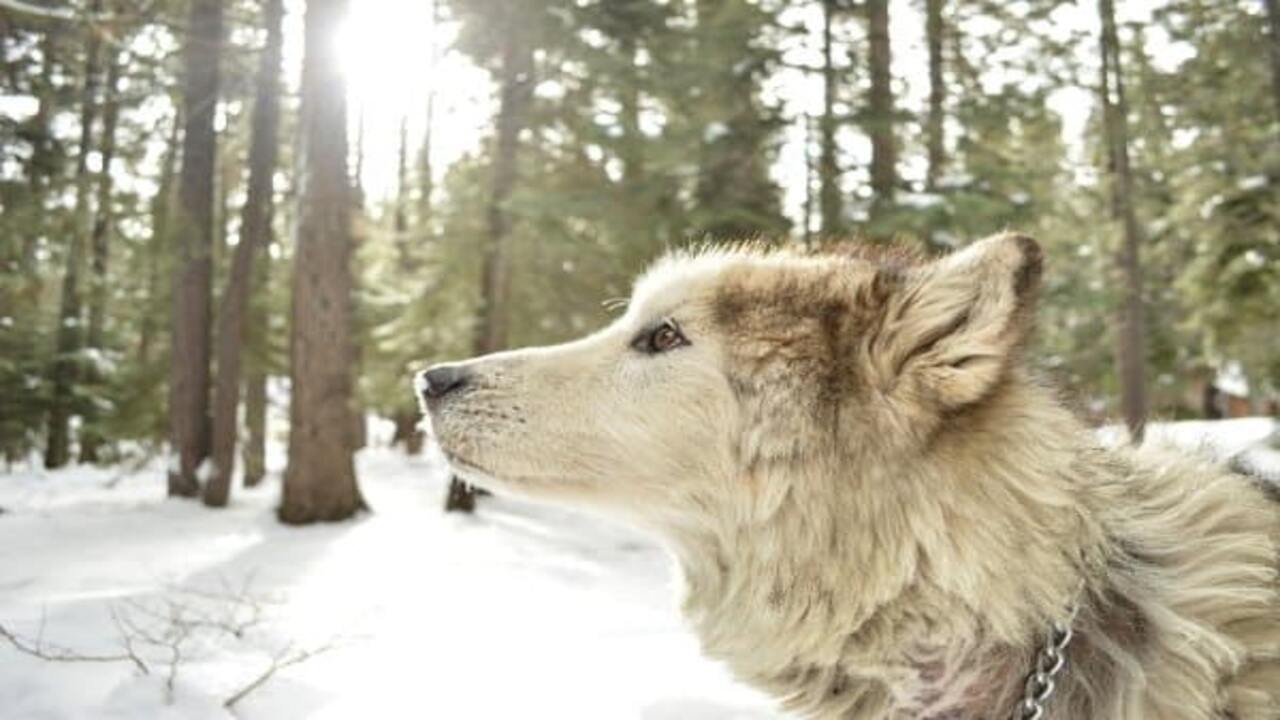
When considering adding a low-content wolfdog to your family, it is important to assess their compatibility with other dogs. While each individual dog’s temperament can vary, it is generally advised to exercise caution when introducing a low-content wolfdog to other dogs, especially smaller breeds.
The wolf ancestry in these dogs can contribute to their high prey drive and territorial instincts, which may lead to aggressive behavior toward other dogs. Proper socialization and training from an early age can help mitigate potential issues.
Still, it is essential to closely monitor interactions between a low-content wolfdog and other dogs to ensure the safety of all animals involved. Consulting with a professional trainer or behaviorist experienced in working with wolfdogs can provide valuable guidance on managing their interactions with other dogs.
Can Low-Content Wolf Dogs Live In A City?
Many people wonder if low-content wolf dogs can live in a city. While it is possible for these animals to adapt to urban environments, there are several factors to consider before bringing one into a city setting.
First and foremost, it is important to check the local laws and regulations regarding wolf dogs, as some cities may restrict owning them. Additionally, wolf dogs require much space and mental stimulation, so living in a small apartment or home may not suit their needs.
It is also crucial to provide them with regular exercise and socialization opportunities to prevent boredom and potential behavior problems. Ultimately, the decision to have a low-content wolf-dog in a city should be made responsibly and with careful consideration of the animal’s welfare.
What If You Need To Rehome Your Low-Content Wolf Dog?
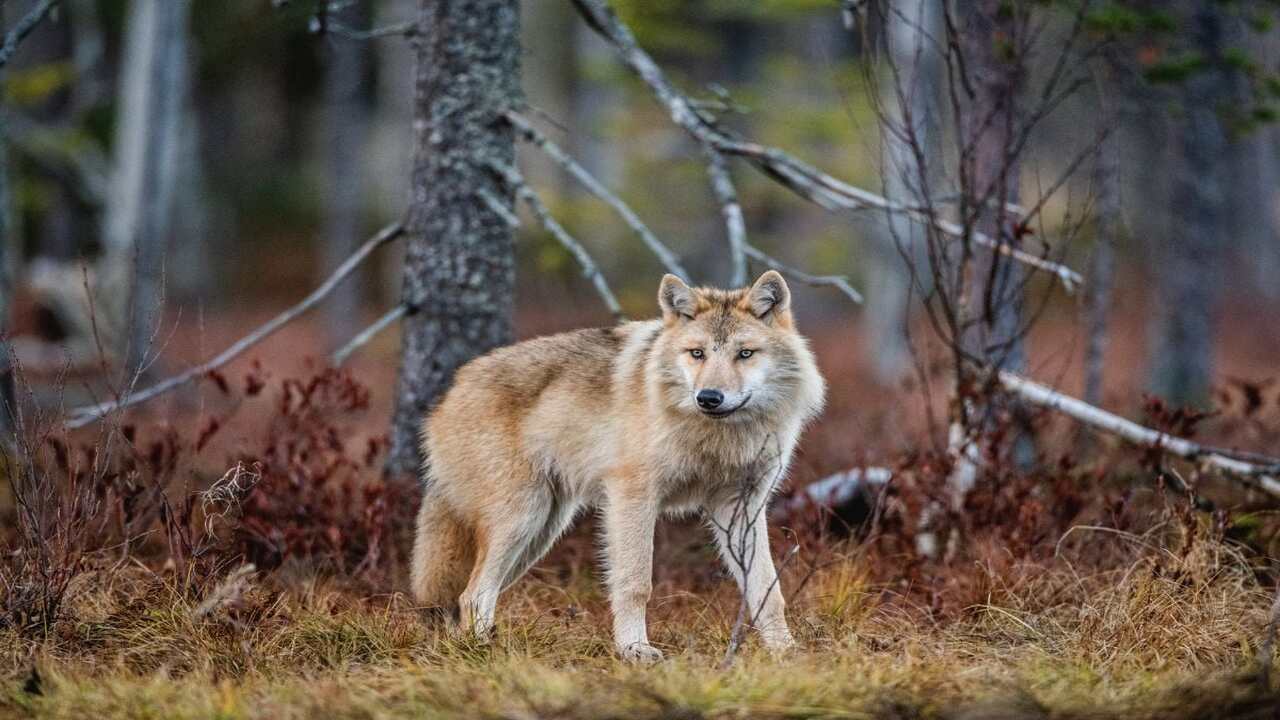
Rehoming a low-content wolf dog can be challenging, but options are available to ensure the animal’s well-being. It is important to prioritize the safety and happiness of the wolf-dog and potential new owners. One option is to contact reputable rescues or organizations specializing in wolf dogs, as they may have the resources and experience to find suitable homes for these unique animals.
Additionally, networking within the wolf dog community can also be helpful, as some individuals are specifically interested in adopting a low-content wolf dog. Transparency about the animal’s needs, behavior, and special requirements will be crucial in finding the right match.
Rehoming a low-content wolf dog requires careful consideration and responsible decision-making to ensure a successful transition for all parties involved.
Conclusion
Low content wolfdogs are unique and fascinating creatures with a mix of wolf and dog traits. They have distinct physical characteristics, such as appearance, coat, snout, tail, and eyes. Regarding their behavior and temperament, they can exhibit wild and domesticated traits, making them a challenge to train and care for.
Living with a low-content wolfdog requires special considerations, including a suitable enclosure and potential challenges in socializing them with other dogs. Potty training and city living are also factors to consider when owning a low-content wolfdog. Lastly, if circumstances arise where rehoming is necessary, it’s important to find a suitable and understanding new home for these unique animals.
Frequently Asked Questions
1.What Is Considered A Low-Content Wolfdog?
Ans: A low-content wolfdog is a hybrid breed with less than 50% wolf genetics. The percentage of wolf genetics determines their behavior and physical traits. While they may have some wolf-like characteristics, low-content wolfdogs are generally more domesticated. Researching their specific needs is crucial.
2.Are Low-Content Wolf Dogs Safe?
Ans: Low-content wolf dogs can be safe if properly socialized and trained. Their genetic makeup may still lead to some wild behaviors. Research the breed before adopting, and check local laws regarding wolf hybrids in your area.
3.What Percentage Is A Mid-Content Wolfdog?
Ans: Mid-content wolfdogs typically have a wolf percentage ranging from 30-70%. This percentage can impact their temperament and behavior, potentially requiring more specialized care and training than low-content wolfdogs. Researching and understanding the unique characteristics of different types of wolfdogs is crucial before considering adoption.
4.What Two Dogs Make A Wolfdog?
Ans: A low-content wolfdog is a hybrid of a domestic dog and a wolf. Typically, they are created by breeding a grey wolf with breeds like Siberian Husky, Alaskan Malamute, or German Shepherd. However, breeding wolfdogs can be controversial due to their unpredictable behavior and potential danger to humans. Thorough research is crucial before considering adopting one.
5.When Can You Get A Low-Content Wolf Dog?
Ans: It’s important to consider the availability of low-content wolfdogs as it may vary depending on the breeder and location. Researching and finding a reputable breeder is crucial before getting a low-content wolfdog. The ideal time to get a puppy is when they are around 8-12 weeks old, but make sure you are prepared for the responsibilities of owning one.
Meet Elyse Colburn, the devoted canine companion and storyteller behind the enchanting world of “Tales, Tails, and Adventures Unleashed.” A passionate dog enthusiast with a heart full of paw prints, Elyse Colburn shares heartwarming tales and insightful adventures, celebrating the joy, loyalty, and endless antics that make every dog a true hero. Join Elyse Colburn on this tail-wagging journey, where every post is a love letter to our four-legged friends.